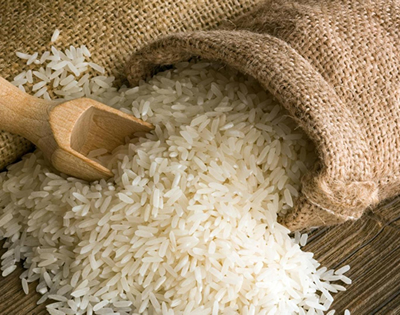
By Henry ABRAHAM
Ghana’s current glut of unsold local grain may appear at first glance to be good news for the many consumers and policymakers concerned about rising food prices. After peaking at a 61% year-on-year increase in January 2023, food inflation fell to 9.8% in October 2025. Although still substantial, this represents a marked easing of pressure on household budgets.
Biblical stories offer a caution. In the account of Joseph in Egypt, periods of abundant harvest were followed by famines that devastated ordinary people, who ultimately surrendered their land in exchange for food. The outcome was stark: the powerful benefitted, the vulnerable lost out.
Despite the local grain surplus, food imports continue at scale, and exports of Ghana’s own surplus show little sign of expansion. Given these negative factors, Government’s recent announcement it is releasing funds for grain purchases to be added to the national buffer stock will provide some welcome relief for many farmers, providing these purchases are transparently and fairly executed. But why has this issue arisen? Some clear structural problems are a key part of the explanation. For example, limited storage and processing capacity restrict marketing options for locally grown grain, though both government and private actors are seeking solutions for this.
Addressing the deeper challenges
A deeper long-term challenge receives less attention: Ghana’s crop production costs, including for grain, are high, making it difficult for local crops to compete with imports. Substandard or illegally imports of rice and other crops is one factor, but the core issue is cost. With the cedi roughly one-third stronger than nine months ago, even legitimate grain imports are now far cheaper. Combined with a roughly 10% decline in world grain prices, imported grain is likely to typically be 40% cheaper than a year ago in cedi terms. Meanwhile, domestic production costs continue to rise, even if more slowly, with October 2025’s general inflation rate at 8%.
The failure of many agro-processing plants across Ghana over the past decades illustrates the problem. These firms struggled to pay farmers prices high enough to cover their costs and secure supply, while also producing goods competitive against imports or suitable for export. The result was commercial unviability and closure. We must learn from these failures.
One of the principal drivers of high local costs is Ghana’s low crop yields, which are far below global averages. Over the past decade, the main policy response has been to encourage the use of inorganic fertilizer. This approach has faltered. For many smallholders, the cost of inorganic fertilizer now equals or exceeds the value of the additional grain it generates.
Even subsidising inorganic fertilizer offers poor value for money when the cost to the state approaches or surpasses the market value of the incremental yield, before accounting for the costs of diversion, smuggling, quality concerns, and the undermining of local fertilizer producers competing with the subsidised product.
However, a viable and affordable alternative exists. OFA, a Ghana-made liquid organic multipurpose input produced in the Ashanti Region, can reduce unit production costs—often by a third or more—because it is both affordable and effective. Unlike most organic inputs, its production can be scaled readily and it can be transported efficiently; one litre is sufficient for an acre of many grain crops. It also increases drought resilience, both reducing risks to the farmer, and enabling greater investment in the minor rains season which helps farmers get better prices for their crops, and benefits food security by smoothing supply. OFA also delivers environmental benefits by reducing reliance on inorganic fertilizers, which can degrade soils and water quality, and by limiting the need for inorganic pesticides and fungicides, whose unsafe use contributes to rising health risks, visible in cancer spikes in northern Ghana and elsewhere.
In the long term, expanding year-round irrigation—an ambition of recent government plans—should greatly strengthen grain competitiveness. However, high capital costs and long implementation timelines mean irrigation cannot address the immediate challenge. The Volta Economic Corridor initiative is notable for its ambitious scale and strategic intent, but success will depend on finding practical routes to delivery. Priority should go to raising the cost-effectiveness and profitability of existing farms and farmers, paired with improved storage. These affordable and practical steps can begin immediately, while the high cost items of irrigation infrastructure, processing plants, and large hub farms are developed in parallel.
Urgency is required. Farming profitability was already generally low, and many farmers have incurred substantial losses this year. Without a course correction, Ghana risks reduced crop planting and harvests in 2026, diversion of farmland to activities such as galamsey, increased dependence on imports, and further erosion of local competitiveness. It is encouraging to hear the Minister for Food and Agriculture recognising the scale of the challenge. In a speech on 6 November he stated: “The challenge before us is not simply to produce more food, but to transform our entire agri-food system—ensuring the process is profitable, inclusive and environmentally responsible.”
As the Minister highlights, farmer profitability is central. Competing with imports that are typically 40% cheaper in cedi terms than a year ago requires solutions that reduce production costs as well as raising yields, to enable Ghana’s farmers to compete on price whilst remaining profitable. OFA offers an immediate and affordable route to lower crop unit costs, while irrigation investment provides a long-term solution.
Other necessary reforms
Additional reforms are needed. Smallholder farmers, though often highly knowledgeable about local conditions, lack ready access to broader market intelligence. Ghana needs larger, better-capitalised aggregators and processors that can share reliable market information, guide their farmers crop selection and timing, and aggregate sufficient quantity to supply on the large scale msny buyers require.
Smallholders also require mechanisation services. Planned farmer service centres show promise, though previous similar initiatives have failed due to weak management and planning, for example to ensure the availability of spare parts, a lack of local ownership and accountability, and insufficient long-term investment.
Risk reduction for farmers is a further priority. Farming, particularly for smallholders without financial buffers, is highly vulnerable to even occasional poor outcomes, and with climate change we all need to adapt to greater variability of climate and farming outcomes.
The government’s focus on value-chain management is a welcome departure from decades of fragmented and often unsuccessful initiatives. But this must not become a barrier to incremental short-term progress.
Effective strategy often involves taking early steps that deliver visible gains, alongside building the foundations for broader transformation. Affordable and effective inputs, better storage, and simple, locally implementable processing methods all fit this description.
These measures can ensure that 2026 strengthens, rather than undermines, the capacity and confidence needed to achieve a resilient and competitive agricultural sector, including building the private sector investor confidence needed to bring in the large scale investment needed for longer term transformation.
Strengthening Domestic Markets and Regional Trade
Ghana’s grain challenges are also rooted in the limited integration of domestic markets. Price differences between producing and consuming regions remain substantial due to poor road quality, limited transport options, and inadequate market information systems.
Strengthening these linkages would allow surpluses in major producing zones such as the Northern, Upper East, Upper West and Savannah regions to flow efficiently toward deficit areas, reducing post-harvest losses and stabilising prices. A modernised national market information system, leveraging existing private sector digital platforms, SMS alerts, and radio networks— could equip farmers, aggregators, and traders with real-time price trends to support more profitable decisions.
Beyond domestic markets, Ghana has opportunities within West Africa. Neighbouring countries frequently face grain deficits, yet Ghanaian exports have rarely taken full advantage due to inconsistent supply volumes, high local production costs, and challenges meeting quality standards, leaving the field open for increased imports from other continents. Strengthening quality control, encouraging contract farming, and supporting export-oriented aggregators, and making agreements to supply buffer stocks in other countries could help unlock new regional markets that absorb surplus grain sustainably.
Improving Post-Harvest Systems and Technology Adoption
Post-harvest losses for maize, rice, millet, and sorghum commonly reach 30% or even more in Ghana. Losses stem from inadequate drying, poor-quality storage structures, pest infestations, and limited access to small-scale processing technologies. Strengthening drying systems—such as solar dryers or community-operated mechanical dryers—would reduce spoilage and enable farmers to achieve consistent quality levels that meet market requirements.
Affordable hermetic storage technologies can also make a significant impact. Such systems reduce pest damage and extend storage life, allowing farmers to time their sales to coincide with higher off-season prices rather than selling immediately after harvest when prices are low. These improvements not only strengthen farm incomes but also stabilise national supply.
Technology adoption remains low across smallholder farmers due to credit constraints, risk aversion, lack of contextual knowledge, and inconsistent extension services. Greater emphasis on post-harvest advice from extension officers combined with provision of access to simple drying and processing facilities, and expanding digital extension platforms drawing on several existing private sector initiatives in this area, will reduce losses, raise profits and make local grain more competitive.
Financing Models that Reduce Farmer Risk
Agriculture financing in Ghana remains limited by high interest rates, collateral requirements, and lenders perception of farming as high risk. Innovative approaches could help bridge this gap. Warehouse receipt systems, for example, allow farmers to store grain in certified facilities and receive credit against its value.
There is also the possibility of advance purchase contracts from local aggregators to farmers, guaranteeing purchase and price of crops in advance. These approaches can provide liquidity, reduce distress sales, and improve the creditworthiness of smallholders. Progress that has been made on digital technologies such as identification systems like Ghanacard, and satellite mapping and monitoring, can facilitate such systems.
Index-based crop insurance also has potential. Traditional insurance schemes fail because they require costly field assessments after losses occur. Index-based products use weather or satellite data to trigger payouts automatically when conditions such as drought or excessive rainfall occur.
Particularly when combined with affordable yet effective inputs that reduce production costs and mitigate drought risks, and so can reduce the amount of financing needed, such insurance could be attractive to farmers and give them the confidence to go ahead with planting and to invest in improved agronomic practices.
Strengthening Institutions and Governance
Effective coordination across agencies is essential for addressing Ghana’s grain competitiveness. Past initiatives faltered due to fragmented responsibilities, an overemphasis on central control as compared to empowering local implementors and holding them accountable, and weak enforcement of standards.
Strengthening the regulatory capacity of institutions responsible for quality control, import monitoring, and fertilizer oversight is essential. A transparent, predictable policy environment will also encourage private-sector investment in storage, processing, and aggregation, and make advance contracts for smallholder farmers more viable.
The national buffer stock system should be restructured to prioritise strategic objectives: stabilising prices, supporting farmers during gluts, and maintaining reserves for emergencies. Planning and clear, timely communication of purchase schedules and pricing and purchasing policies would help farmers plan production and reduce uncertainty.
A Strategic Path Forward
Ghana’s grain sector is at a crossroads. Immediate measures to take include adoption of affordable cost-reducing inputs, improved storage, and more efficient market linkages, to deliver quick wins. Medium-term reforms should include expanded regional trade, mechanisation services, post-harvest technologies, which can strengthen resilience. Long-term infrastructure investments needed include irrigation and private sector–led modern hub farm and processing zones, which work closely with surrounding smallholder farmers, to transform competitiveness.
These stages need not, indeed must not, be sequential; they should be advanced in parallel, using the well-articulated frameworks Government has recently published for Feed Ghana and Grow24 as guidelines to ensure alignment. A key factor is that the large private sector investment sought for these programmes is much more likely to be forthcoming if visible progress is already being made in increasing the currently low profitability of farming in Ghana.
The overall objective must be profitable, competitive, and environmentally sound crop production that improves farmer livelihoods and strengthens national food security. Achieving this requires collaborative and well sequenced efforts across government, private firms, farmer organisations, researchers, and financial institutions.
If Ghana succeeds in making 2026 a year of stabilisation and renewed confidence, and above all of greater profitability for farmers, the current glut will be remembered not as a crisis, but as a turning point toward the stronger and more competitive agricultural future for Ghana that we all hope for.
Henry is CEO of HJA Africa – makers of OFA, a 9 year old Ghanaian impact-first organic input manufacturing firm.
The post Making farming more profitable is the key appeared first on The Business & Financial Times.
Read Full Story

















Facebook
Twitter
Pinterest
Instagram
Google+
YouTube
LinkedIn
RSS